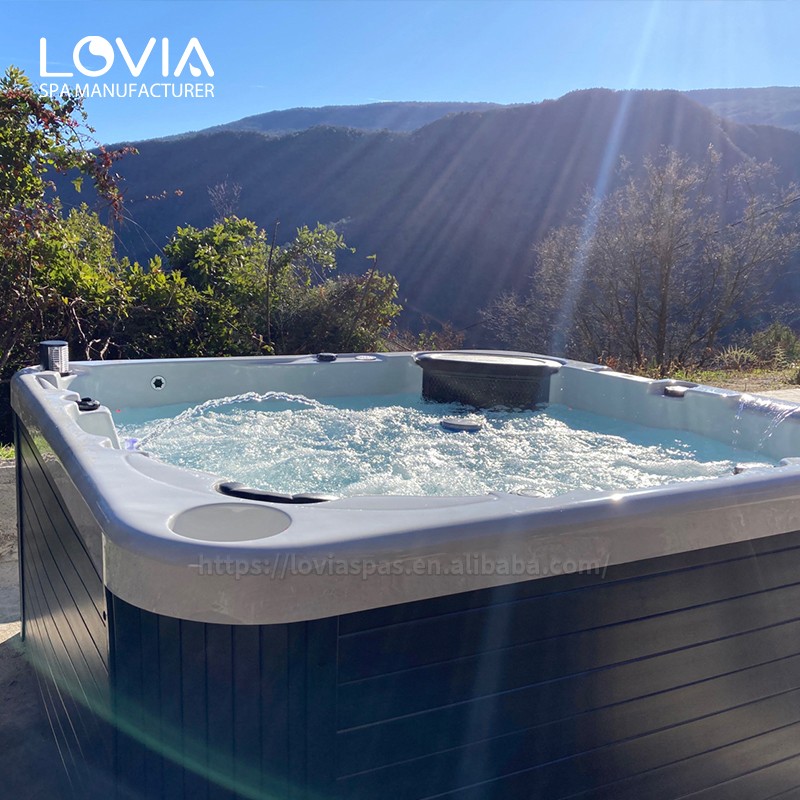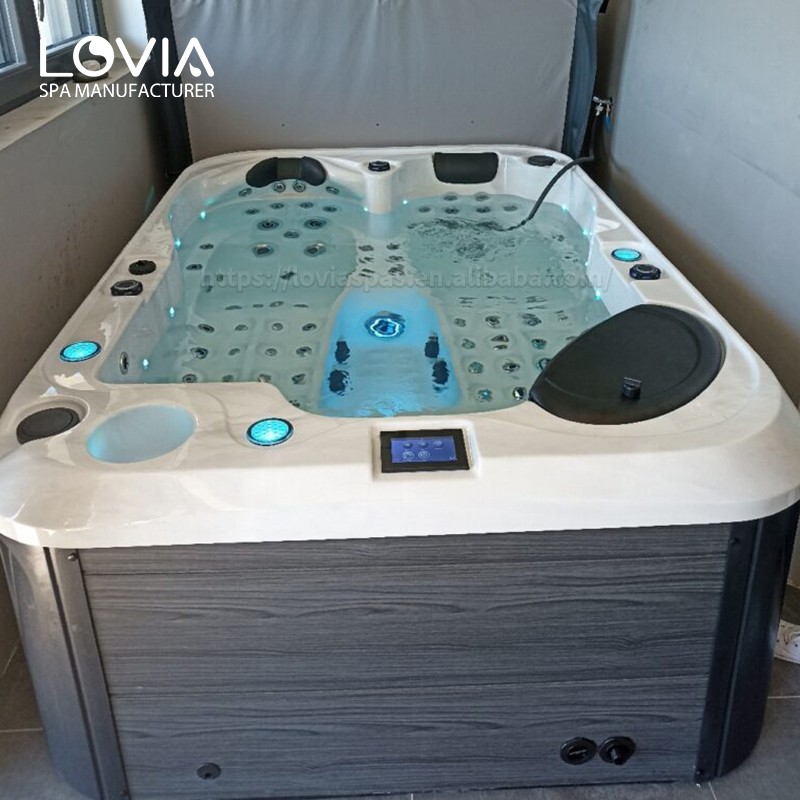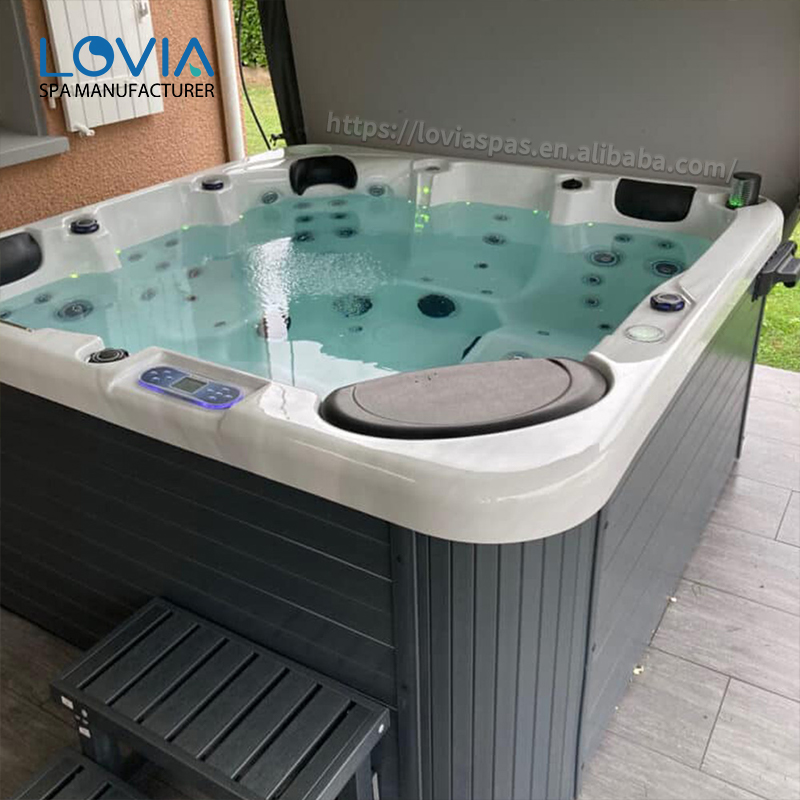
How often do you need to replace your hot tub heater?
2025-02-15 15:30As an important part of a comfortable family life, hot bathtubs have been welcomed by more and more families in recent years. Whether it is for relaxation or enjoying family entertainment time, the frequency of use of hot tubs has gradually increased. Among its core components, the heater is undoubtedly the most critical link. The quality of the hot tub heater directly affects the heating effect, energy consumption and service life of the bathtub. Therefore, understanding the replacement cycle of the heater is crucial to maintaining the best performance of the hot water tub.

What is the function of the hot bathtub heater?
Before discussing the replacement cycle of the heater, we first need to clarify the function of the heater. The main function of the hot water tub heater is to heat cold water to a temperature suitable for soaking, usually between 37℃ and 40℃. The heater is driven by electricity or gas, and uses a built-in heating element or heat exchange device to heat the water and keep the water temperature constant. As the heater is used for a longer time, its internal components will gradually age, performance will decline, and even malfunction.
Since the water in the hot water tub needs to be kept at a high temperature, if the heater does not work properly, it will not only affect the user experience, but also increase energy consumption, causing electricity or gas bills to soar. Therefore, keeping the heater in normal operation is of great significance to ensure the efficiency and cost control of the hot water tub.
What is the normal service life of a hot tub heater?
The replacement cycle of a hot bathtub heater is not fixed. It will be affected by many factors, such as the quality of the heater, the frequency of use, the water quality, and the maintenance. Generally, the life of a high-quality hot tub heater is between 5 and 10 years. If used properly, cleaned and maintained regularly, some high-end models can even last for more than 10 years. However, if the hot water tub is often in a high-load working state or the water quality is poor, the service life of the heater may be significantly shortened.
An important factor affecting the life of the heater is the mineral content in the water. Hard water contains high concentrations of minerals such as calcium and magnesium. Long-term use will deposit scale on the heater's elements, affecting the heating effect and even causing premature damage to the heating elements. In order to extend the service life of the heater, many families will install a water softener in the hot water tub or clean the scale regularly. In addition, excessively frequent heating or long-term use of high-temperature water will also accelerate the aging of the heater.

When do you need to consider replacing the hot tub heater?
Although the theoretical lifespan of a hot tub heater is 10 years, in practice, various factors may cause the heater to fail earlier. Understanding and identifying the signs that the heater is about to fail can help users replace it in time to avoid more serious failures or safety hazards.
Situations where you need to consider replacing your hot bathtub heater:
1. Longer heating time
2. Unstable water temperature
3. Unusual sounds or noises
4. Increased energy consumption
5. Severe scale accumulation
6. Frequent heater failures
Longer heating time:
If you find that the water in your hot tub is heating up more slowly than before, or it takes longer to reach the desired temperature, this may be a sign of heater aging. The performance of the heating element will gradually decrease with the increase of use, resulting in less efficient heating.
Unstable water temperature:
Under normal circumstances, the hot bathtub heater should be able to keep the water temperature constant. If the water temperature fluctuates between hot and cold, or fluctuates greatly in a short period of time, it may mean that there is a problem with the heater's temperature control device, or the heater itself has begun to fail.
Unusual sounds or noises:
The heater should be quiet when it is running. If you hear strange noises coming from your heater, such as humming or buzzing, while you are using your hot bathtub, it could be that the internal components are wearing out or there is another mechanical problem.
Increased energy consumption:
The energy efficiency of a heater will gradually decrease over time. If you notice a significant increase in your electricity or gas bills, but your hot tub usage has not changed, this could be a sign of an aging heater that is using more energy.
Excessive scale buildup:
As mentioned earlier, minerals in hard water can form scale on the heater elements. If you notice significant scale buildup on the heater surface and cleaning it does not restore normal heating, this could mean that the internal components of the heater are damaged and need to be replaced.
Frequent heater failures:
If your heater is frequently failing, or even requiring multiple repairs, it could mean that it has reached the end of its lifespan. While repairs can temporarily solve the problem, replacing it with a new heater may be more cost-effective in the long run.

How can I extend the life of my hot tub heater?
Cleaning your hot tub heater regularly, especially in areas with hard water, to remove scale can significantly extend the life of the heater. Many heaters are equipped with anti-scale devices or filters, and users should ensure that these parts are working properly and check them regularly. At the same time, try to avoid keeping the temperature high for a long time, which will not only accelerate the aging of the heater, but may also increase energy consumption. Maintaining a moderate water temperature and avoiding frequent turning the heater on and off can reduce wear and tear on the equipment.
If the water quality in your area is hard, installing a water softener is an effective solution. A water softener can reduce the mineral content in the water and prevent scale from depositing inside the heater. In addition, the heating elements in the heater are usually the most easily worn parts. Regularly checking and replacing the heating elements, especially when you find that the heating efficiency has dropped significantly, can prevent the overall heater from being damaged prematurely.
Finally, when buying a hot tub, choosing a better quality heater is the key to extending its service life. Although high-end heaters may have a higher initial price, they are more stable and durable in the long run, and can effectively reduce maintenance and replacement costs.
For businesses seeking trusted suppliers of wellness products, Lovia Spa offers a diverse range of high-quality swim spas and wooden hot tubs. Our products are backed by certifications like CE, ROHS, and ISO9001, ensuring unmatched safety and performance. Enjoy wholesale prices, reliable delivery, and personalized OEM services tailored to your business goals.
